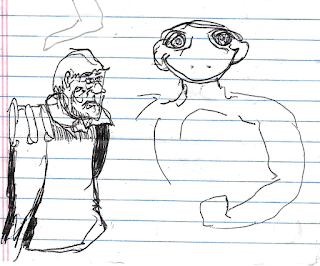The morning of the 10 saw a thin layer of snow on the
ground, but otherwise the rain had stopped. Word from the top is the offensive
was a success and substantial gains had been made the very first day. The
horizon to the west trembled under the ceaseless thump of Third Army’s artillery
and the ever-burning black clouds of war. Now more than ever the RFC needs to
provide the offensive the vital intel it needs to sustain the drive.
Therefore, XIII Army Wing orders two Fe2’s on each
photo-recon mission. With no time to spare every mission must come out a
success! Lessons learned from the first day are shaping the squadron’s tactics
in real time! The RAF spotter planes have had their best success flying low to
the deck and leaving before the enemy can dive from 4K and intercept them. More
to the point, the Germans couldn’t intercept both of them before they
reached the safety of the Canadian lines.
The Mission Board for Tuesday the 10th looks the
same as yesterday. 3 Photo-Recon missions and a bombing run. Same sector, most
likely same opponents, Jasta 11. Rumors fly like mosquitoes among the
aerodromes on where the “Bloody” Red Baron is in action. It seems the legendary
Ace is in five places at once. Truth is the front has not seen the fearsome red
Albatross and its deadly operator for two days now. Could he be dead? And the
German High Command is covering it up?
Bomber 8, the Phoenix and 9 Shockwave are
assigned Linwood and his Hellfire Horde. More photos of the German road
networks behind the front are needed. The sky is once again overcast, but the
rain has not resumed. Karl and Ezekial lead in their Fe2s while Linwood watches
their six from 4,000m.
The Huns are not sleeping in today and the Allied pilots
stiffen up when the grey fighters of Rote Spinnen are spotted at 4,000m and
closing. Two of them. Reinhardt and Norbert open the throttle all the way and
go at the Allied bombers a thousand meters below them. The Fe2s hold formation
and start their defensive dive. They are counting on Linwood to fly down and
shake one of the bombers free from attack. It once again begins a battle of
speed and space. The Ab/d3s, two of them, gain on the slower FE2s one hundred
meters at a time while Linwood can already tell he is falling behind as the
German planes out dive him. He decides he will have to let the battle come to
him. He banks the dive right in the familiar wide-sweep preceding a fighter’s
attack. Knowing the 11ths flight path Linwood plans on surprising the enemy.
But the Albatross dives too fast, too far for Linwood to close the gap. He
would have to risk a wing-tearing nosedive to match their rapid descent. He
squirts bullets at the German’s tail trying to force a challenge, but the nervy
fighters ignore him. They strike wingtip to wingtip at the tailing Allied
bomber. Its Karl’s Phoenix. The German flyers ease off on their
throttles and a second round of firing obliterates the Allied bomber-craft. But
the stratagem worked. The other bomber plane was now out of reach of the
attackers. Only Linwood remained engaged. He corrected the situation
immediately and turned west.





